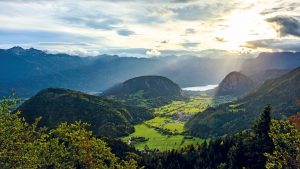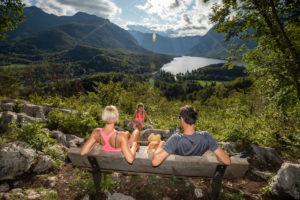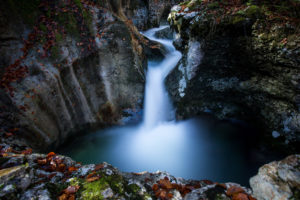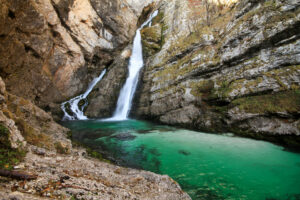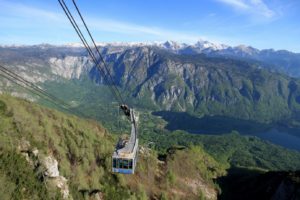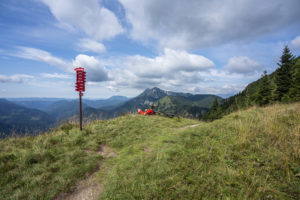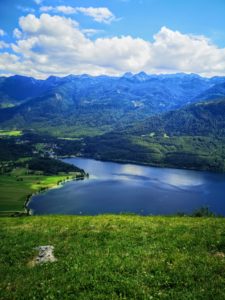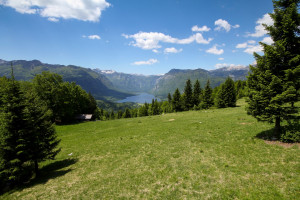Vodnik viewpoint
Vodnik viewpoint is a great family viewpoint. With very little effort, you are rewarded with stunning views over a good part of Bohinj and the surrounding Julian Alps.
The viewpoint is named after Valentin Vodnik, a poet, linguist and enlightened man who served as a priest on Koprivnik for three years and regularly enjoyed the magnificent views from the top. This is why the locals still call the viewpoint Gospodovec.
The viewpoint is situated at an altitude of 1017 metres, which means that it is often above the fog that lingers in the valley in the morning hours.
The view from the top is a real textbook of Bohinj geography. The Lower and Upper Bohinj Valley are beautifully visible, surrounded by the wreath of the Julian Alps. If you look towards Lake Bohinj, you can also clearly see the glacial U-shaped valley and imagine the path that the Bohinj Glacier paved during the last ice age.
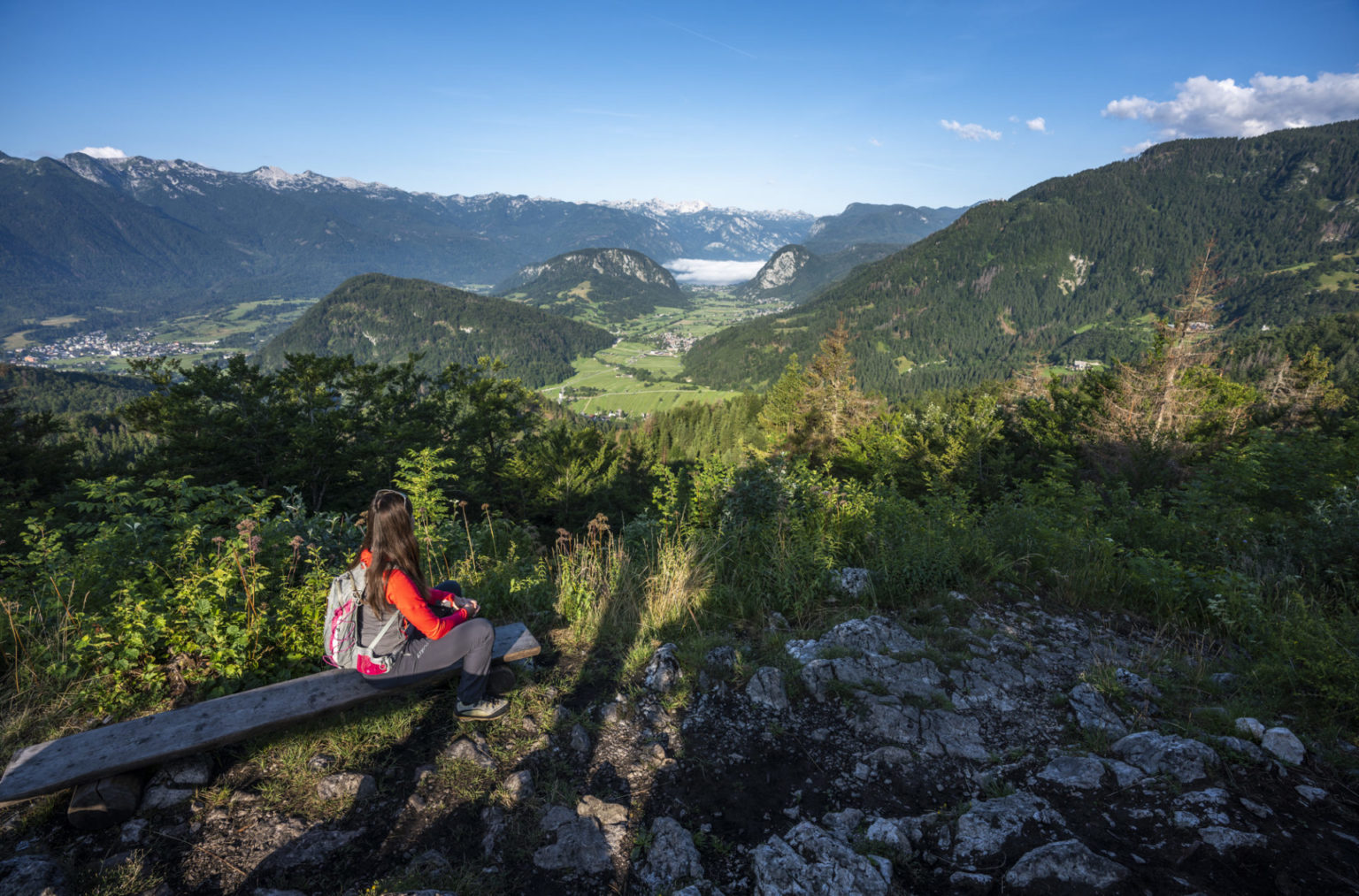
Access to Vodnik viewpoint
The climb from Koprivnik takes only 30 minutes and the difference in altitude is negligible. You can also reach the summit from the lower village of Jereka, a good hour’s walk and 387 metres of altitude gain.
At the top, there is a box with a stamp and a registration book.
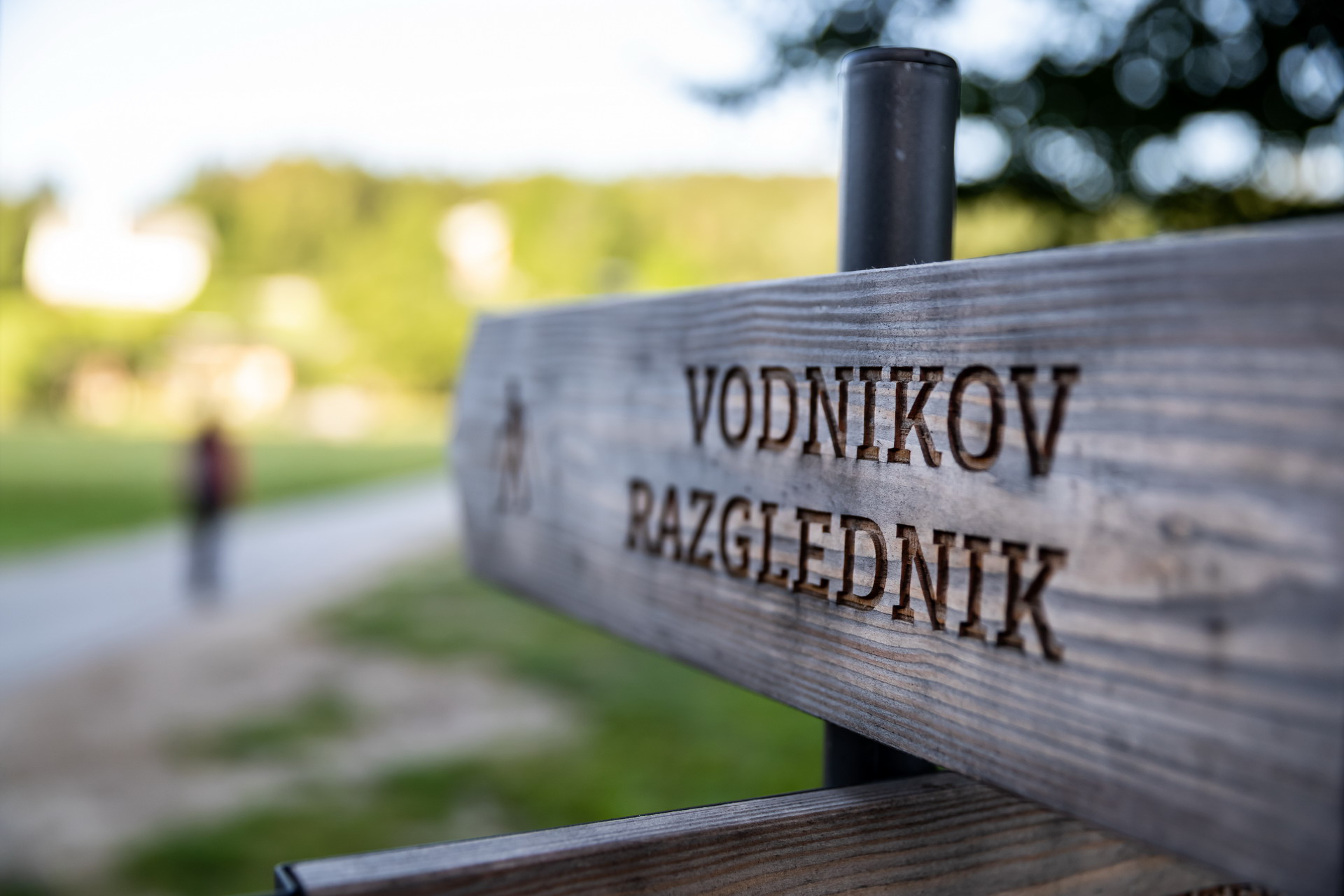
Stone paved path from Jereka
The path was paved in 18. century for the uninterrupted supply of iron ore and charcoal from Pokljuka. You can still see the chutes in the stone today, which have been worn out by the wheels of carts. The trail starts at the bridge in the village of Jereka and ascends to Koprivnik, just below Vodnik viewpoint. The route was built on an ancient north-south route that was used for trade purposes in Soteska before the construction of the Soteska wagon road.
Valentin Vodnik
Valentin Vodnik served at Koprivnik for the first three years after the foundation of the youngest parish in Bohinj (1758 – 1819). Here he met the owner of the ironworks, Žiga Zois. Žiga Zois became his grammatical mentor and nurtured him into our first poet and newspaperman, while at the same time inspiring his passion for mountains and mineralogy. His work was usually in the service of public education and rarely of a personal testimonial nature. After a few years of living at the “source of his inspiration”, he found it difficult to leave Bohinj, but the greater opportunities for his work as a grammarian lured him to Ljubljana.
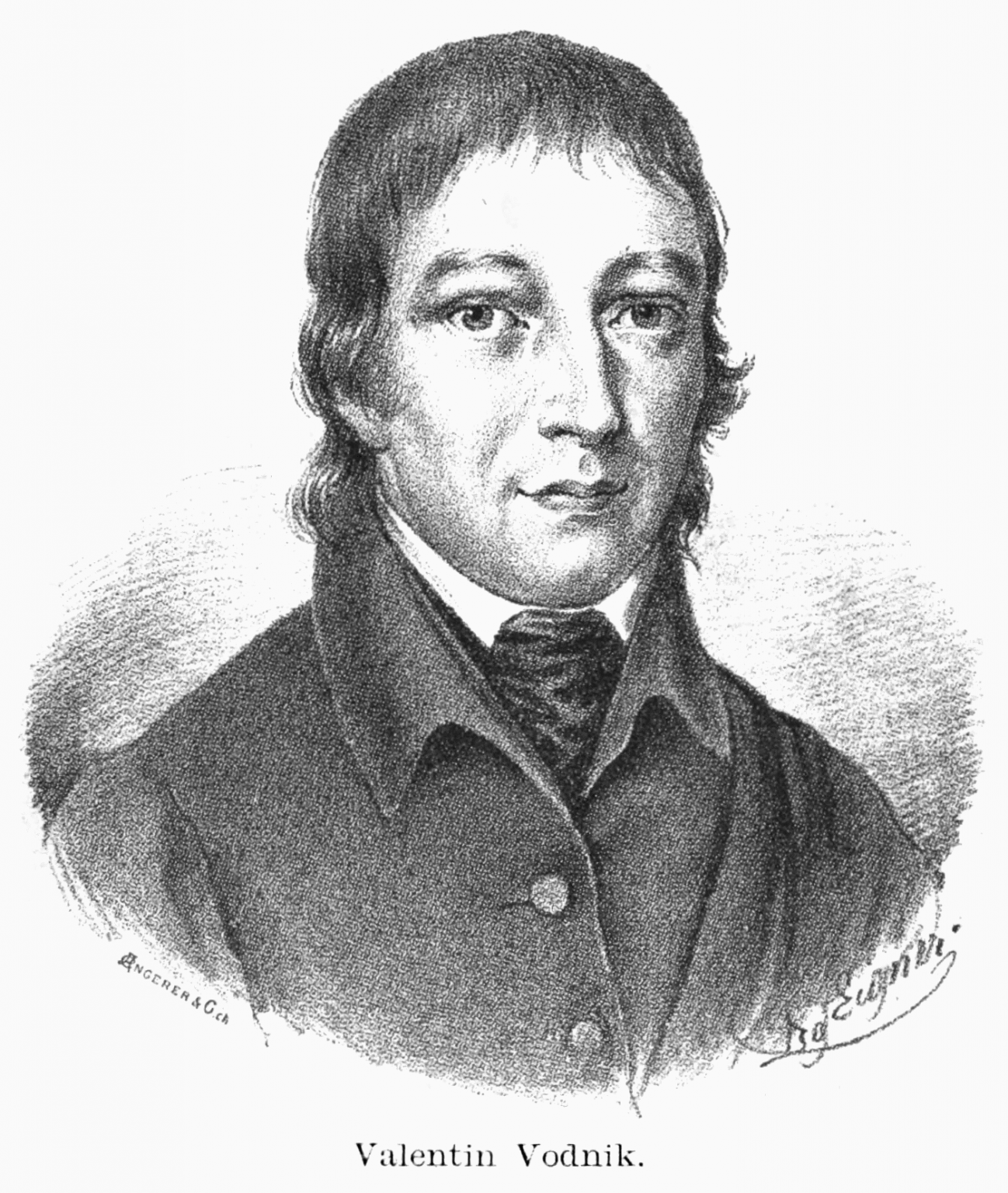
Don't miss out on visiting...
